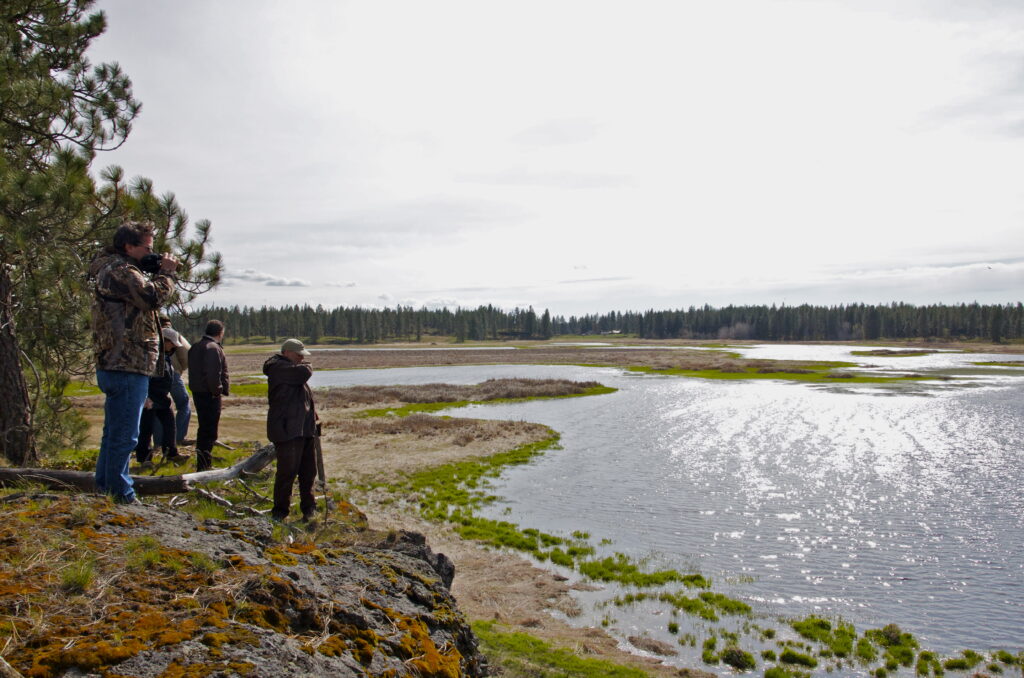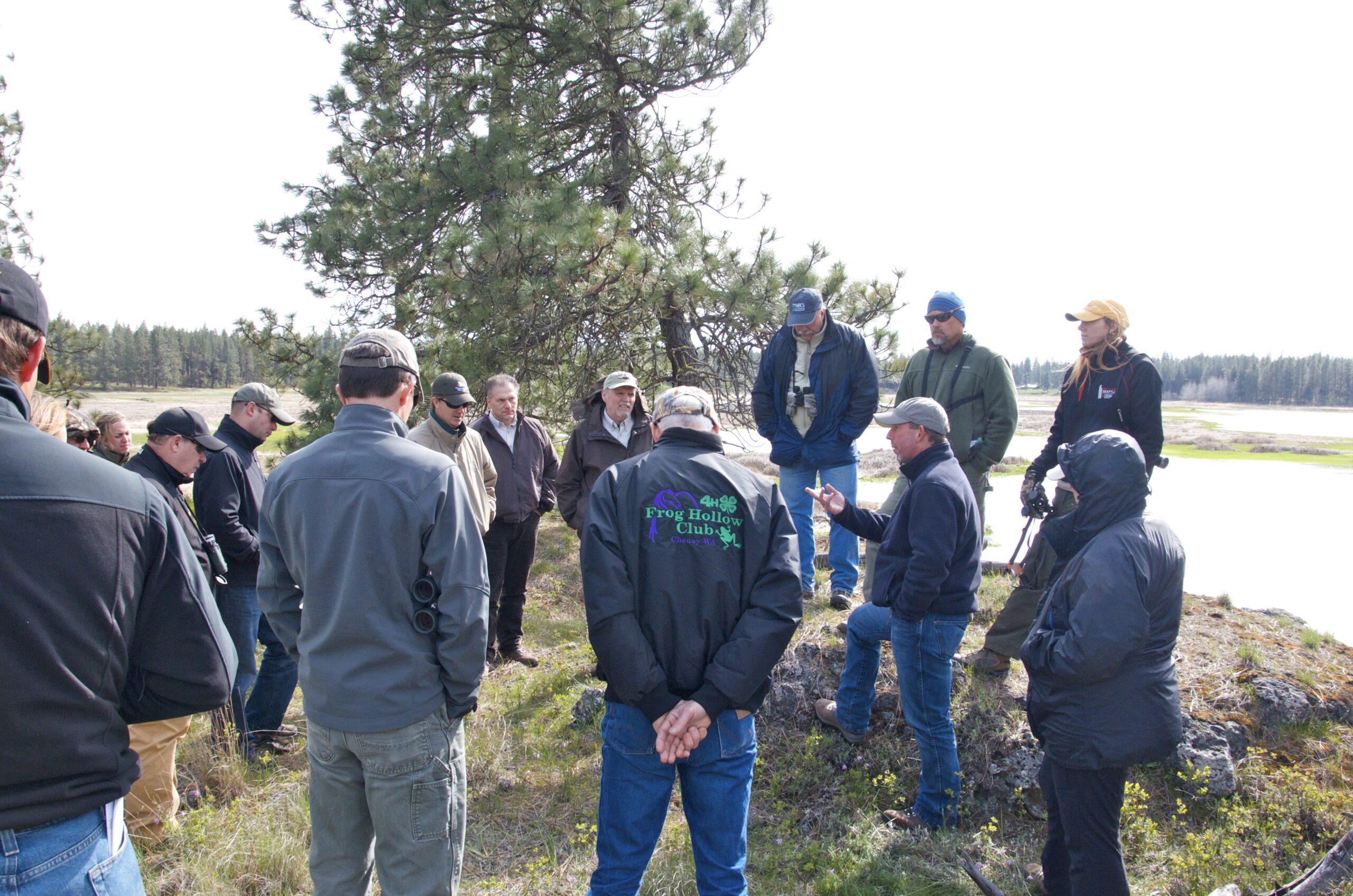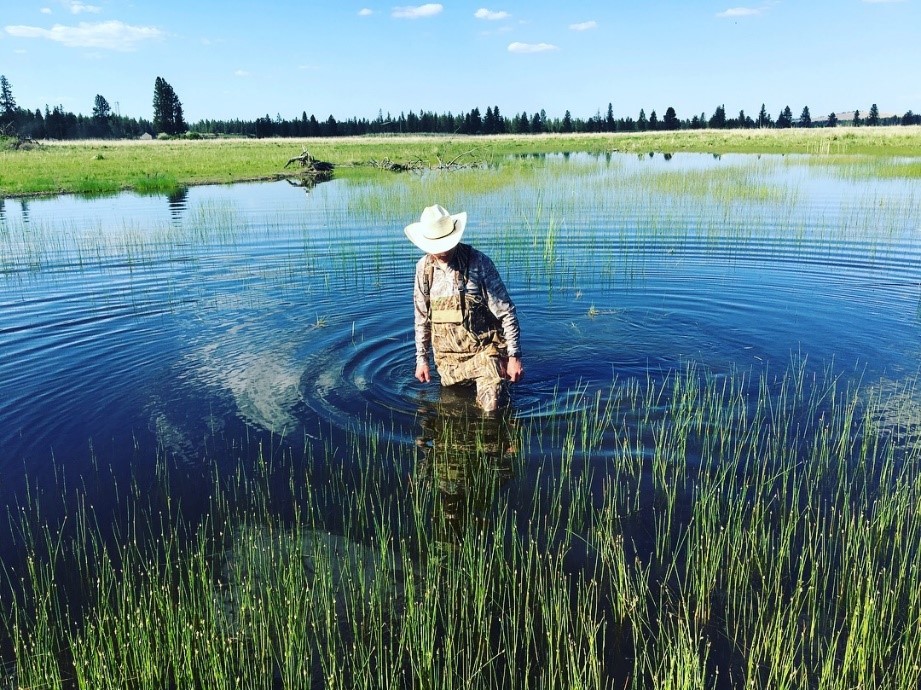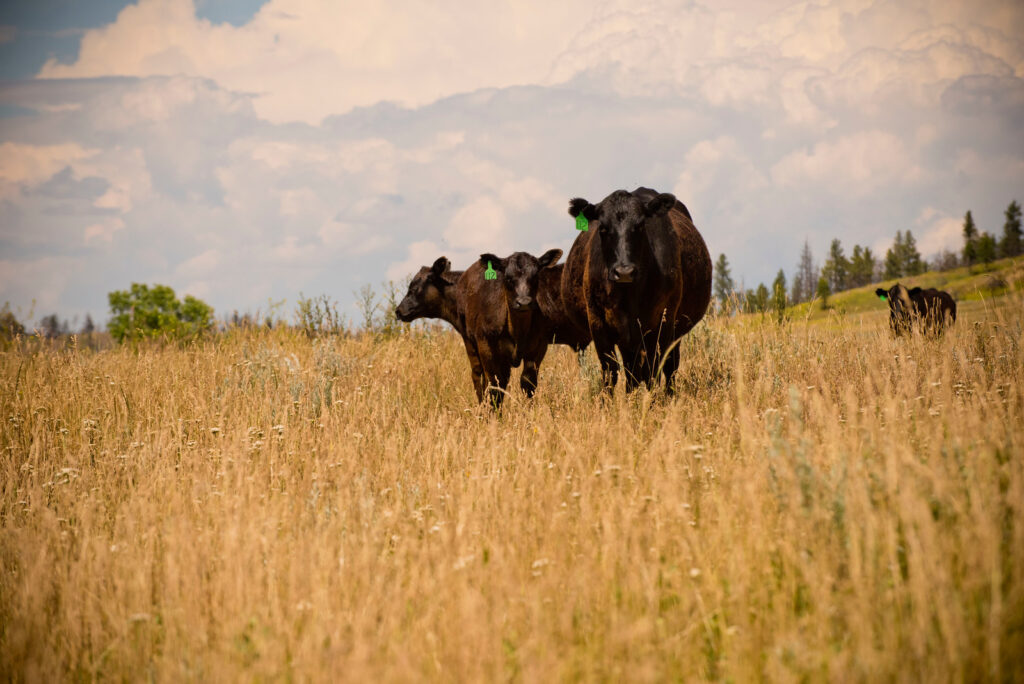
By Terry Mansfield, IWJV State Conservation Partnership Coordinator, Washington
It’s a breezy, late-March morning in eastern Washington and the sky is alive with thousands of waterfowl migrating north to their summer breeding grounds in Canada and Alaska. The many types of wetlands in this region are covered with Northern pintail, Mallards, Wigeon, Gadwall, Cinnamon teal, Lesser scaup, Redhead and Ring-neck ducks, in addition to the large flocks of Canada geese. Although detailed survey information to document actual numbers is lacking, there is no doubt the Channeled Scablands in the Spokane region provides highly productive waterfowl habitat.
The Channeled Scablands of eastern Washington covers approximately 2,800 square miles on the Columbia Plateau. It is characterized by a mosaic of Ponderosa pine forests, shallow soil uplands and sage-steppe as well as a network of permanent, semi-permanent and seasonal wetlands formed by scouring Ice Age floods 15,000 years ago. It is an area of regional and national importance for conserving wetlands for migrating and breeding waterfowl and shorebirds, despite the fact that most of the naturally occurring habitats have been drained or severely altered. Landownership in the area is over 80% private and also includes a number of key public habitat conservation areas, including the 18,000-acre Turnbull National Wildlife Refuge, several State Wildlife Management Areas and Bureau of Land Management holdings.
A number of government agencies, non-government organizations and private landowners are working together under the coordinated efforts of the Intermountain West Joint Venture Washington State Conservation Partnership (Washington Partnership) to focus on developing a long-term vision and tools for wetlands conservation in the Channeled Scablands. As noted by Chris Bonsignore, Manager of Conservation Programs for Ducks Unlimited (DU), “DU is committed to the conservation of wetlands and associated habitats in the Channeled Scablands. In light of the recent water shortages in the Central Valley of California and the Klamath Basin, the importance of these areas may be even greater today.”
Since the majority of the land in the area is privately owned and over 70% of the historic wetlands have been drained or severely altered, it’s critical to involve landowners as partners in wetlands conservation. That’s where the USDA Natural Resources Conservation Service (NRCS) comes into play.
“The NRCS has a long history of working with private landowners in the Channeled Scablands region. Some of our earliest Wetlands Reserve Program easements are located here and date back almost 20 years,” said Dave Kreft, Agricultural Conservation Easement Program Coordinator for Washington. “The area has an amazing patchwork of upland forest, rangeland and wetlands, wet meadows and lakes. For the past 100 years, these wetlands were drained and converted to intensive agriculture use and grazing. Development pressure from the greater Spokane-Coeur d’Alene urban area is adding to the problem.”
Although much of wetland habitat in the Channeled Scablands was altered long ago, the Washington Partnership is working to identify priority areas and assess the condition and relative value of specific wetland sites to guide future conservation and restoration efforts.
“The Washington Partnership has been increasingly effective in finding and developing mechanisms for getting habitat restored and protected. With substantial assistance from DU, the group has leveraged partners’ contributions to successfully compete for three Standard North American Wetlands Conservation Act (NAWCA) Grants,” said Mike Rule, Wildlife Biologist at the Turnbull National Wildlife Refuge. “These grants resulted in the restoration and permanent protection of thousands of acres of wetlands and upland habitats.”
“Through the efforts of the Washington Partnership, we were able to have the Channeled Scablands area approved for the Reserved Grazing Rights wetland reserve easements. This will give ranchers the option to enroll lands into the program and still maintain their historic grazing operation under NRCS approved grazing management plans,” said NRCS’s Kreft. “No one agency or entity can do it all.”
At the heart of the Washington Partnership wetlands conservation effort is the Washington State Migratory Bird Stamp Program administered by the Washington Department of Fish and Wildlife (WDFW), which has provided long-term financial assistance and coordination of the Washington Partnership. Don Kraege, Waterfowl Section Manager, has been a key person in supporting wetlands and waterfowl conservation projects in eastern Washington as well as serving as a member of the Washington Partnership Executive Committee.
As the wetland ecosystems of the Intermountain West face significant, widespread human impacts and loss of water, the Channeled Scablands may become increasingly important to support waterfowl and other wildlife into the future, due to the geologic features and reliable water supply of this landscape.



